In Florence, the Accademia Gallery reopens to the public from tomorrow, Tuesday, Feb. 8, 2022, the Hall of the Colossus, which has been undergoing impressive architectural-structural restoration since October 2020. In addition, the museum has completely renovated the air conditioning system and entirely refurbished the hall, with a new, state-of-the-art lighting system designed to enhance the works on display along with the particular shade of blue chosen for the walls.
The Hall of the Colossus is the first large room visitors encounter in the museum’s exhibition itinerary, and features, in the center, Giambologna’s imposing earthenware sketch of the Rape of the Sabine Women, and houses the collection of Florentine painting from the 15th and early 16th centuries. In order to make the viewing of these works more enjoyable, a new small room has been created, accessed through that of the Colossus, dedicated specifically to the 15th century, in which masterpieces such as the so-called Cassone Adimari by Scheggia (Masaccio’s brother) and Paolo Uccello’s Thebaid have been placed.
“When we decided to act on the trusses of the Hall of the Colossus, the condition of which had been in serious condition for years, with a system that was leaking water creating dangerous seepage, it was necessary to unstall the Hall,” says Cecilie Hollberg, director of the Accademia Gallery in Florence. “It was an opportunity to rearrange the display of the collection, which is preserved here, with new lights and colored walls, for which we used a special blue that I like to call Accademia blue. The works were spaced out to make the path more fluid, also using lighter, less invasive supports for the captions, all of which were revised and changed. With Carlo Falciani, an expert on sixteenth-century Florence, who joined me in this task, we rearranged the paintings, grouping them by schools according to an art-historical as well as an aesthetic criterion. I decided to annex the adjacent room, usually used for temporary exhibitions, and exhibit here the section devoted to the 15th century, with even small works, with the very intention of creating a more welcoming setting for these masterpieces.”
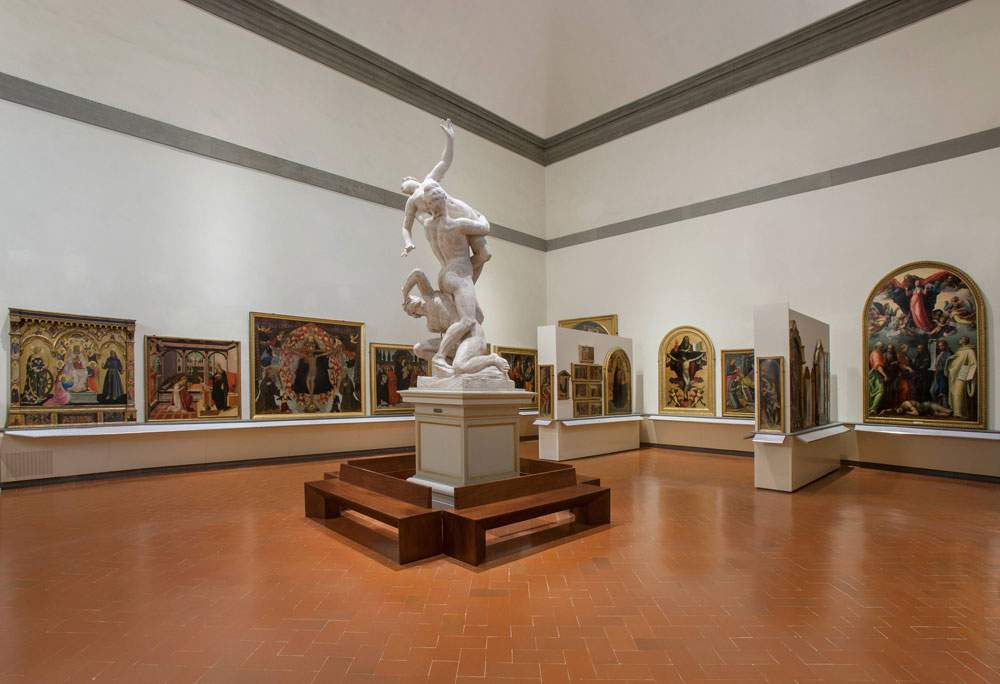 The
The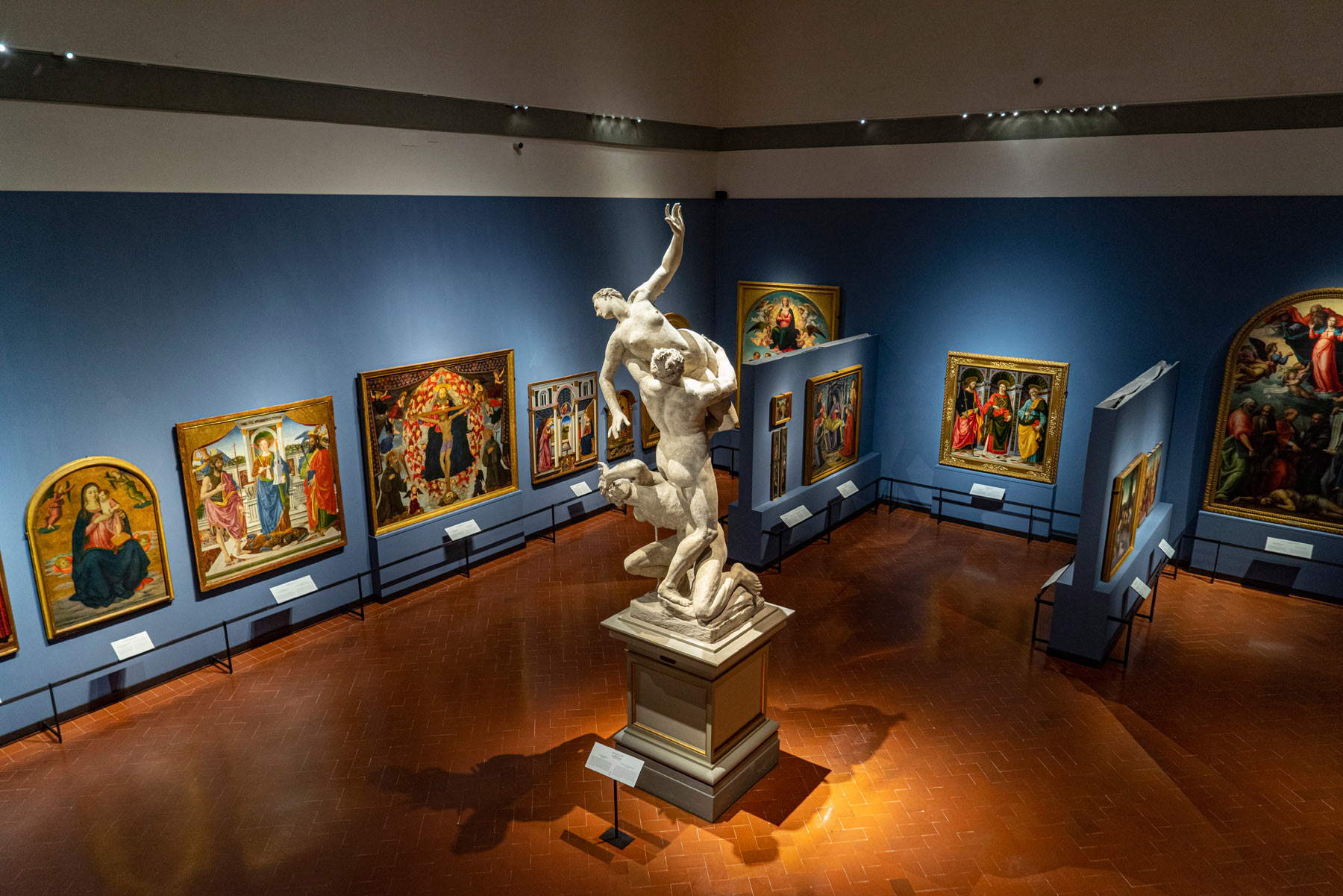
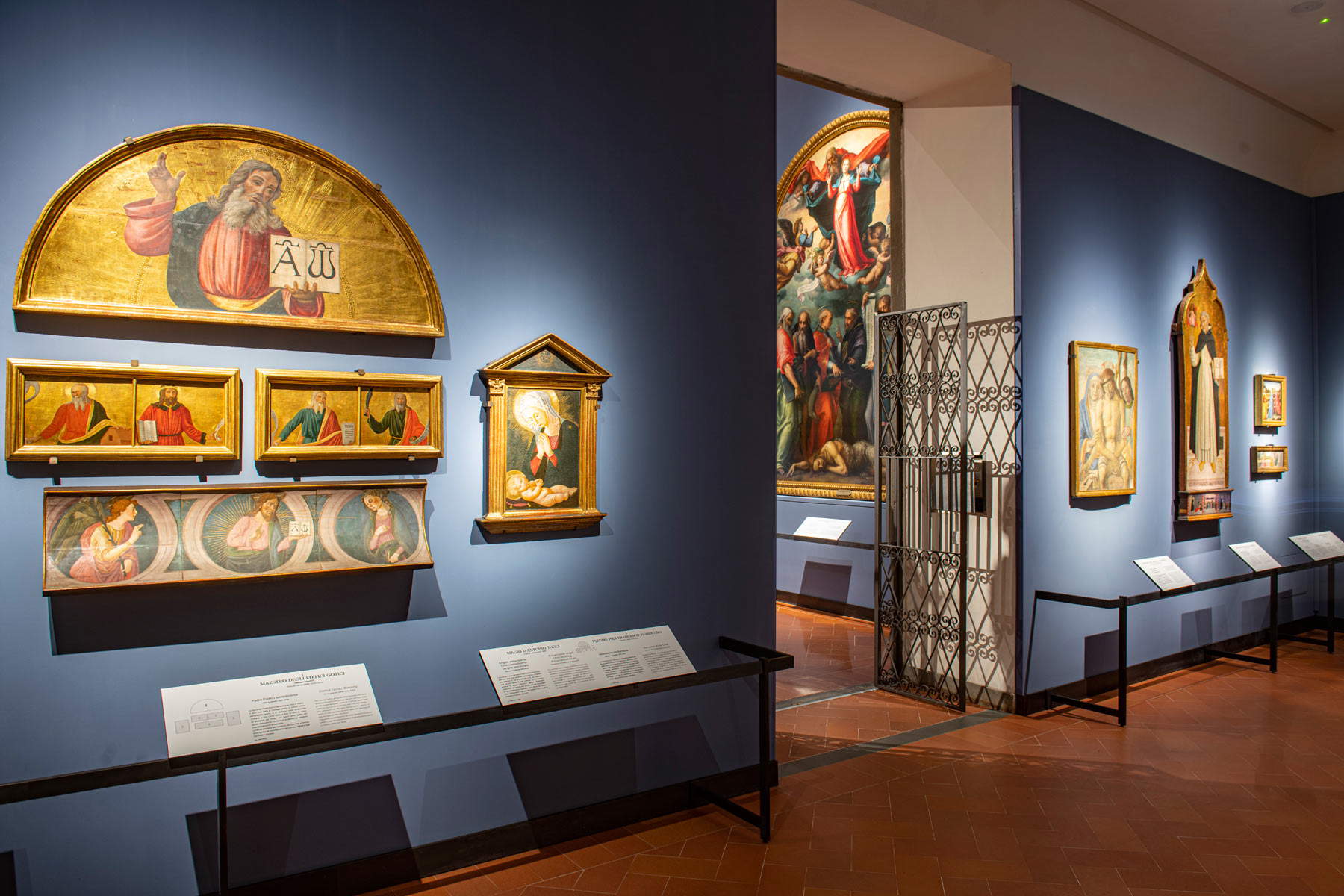

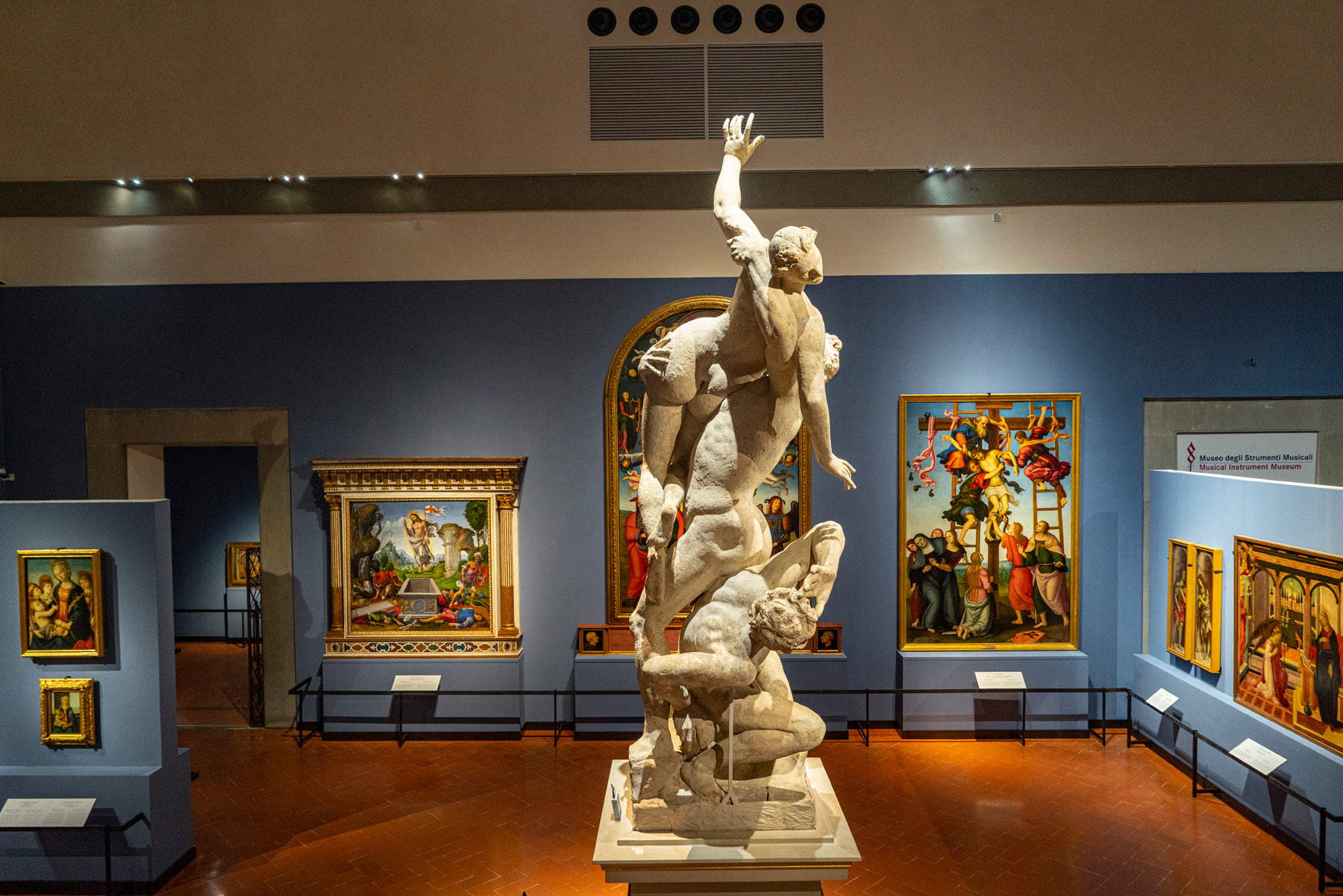
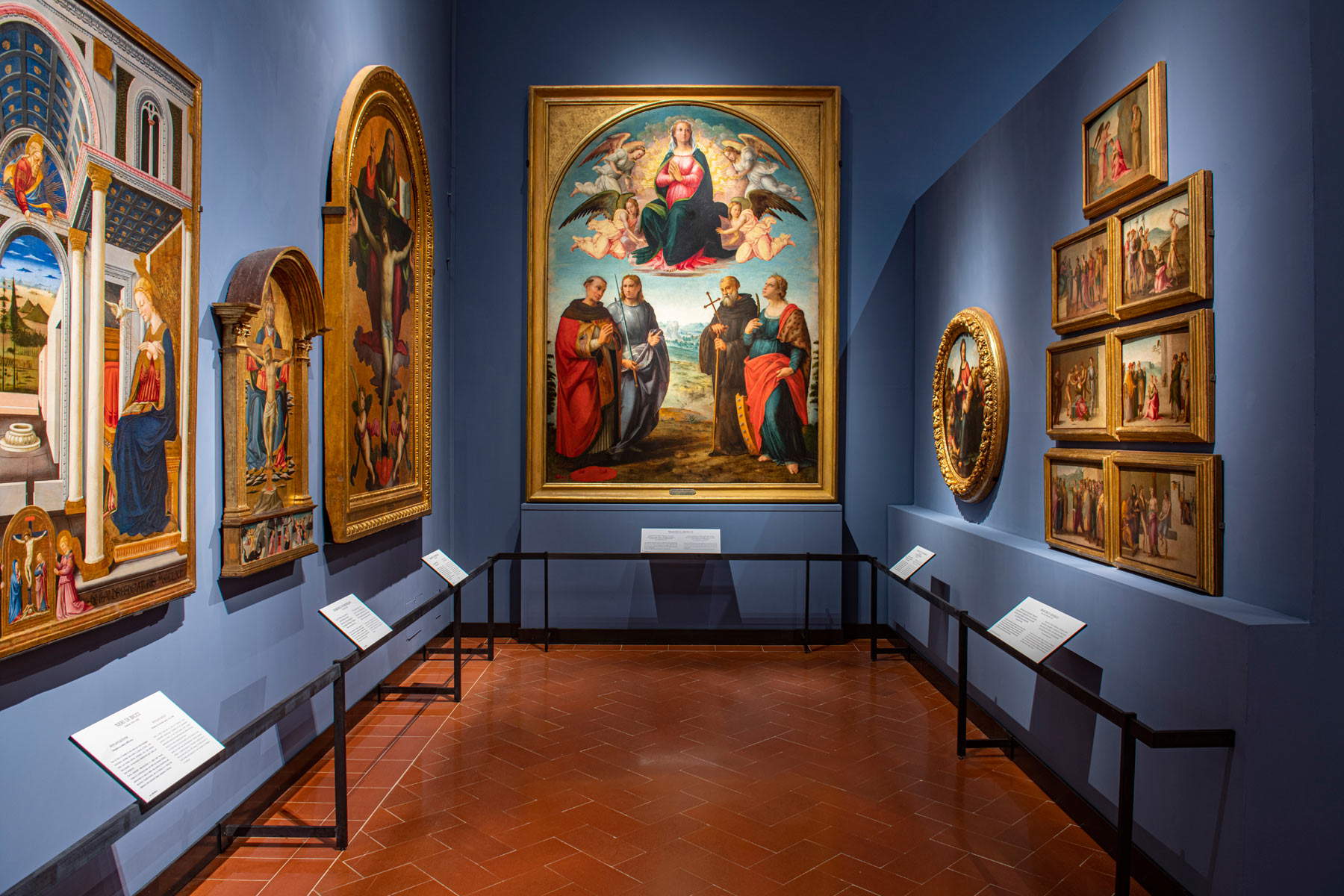
The temporary closure of the hall to the public and the consequent movement of the works provided an opportunity for a complete reassessment of the environment and to document the state of conservation of the works. During the closure of the hall, the museum planned and carried out targeted maintenance operations, as well as restorations where they were necessary. The interventions were carried out by specialized restorers working under a specific maintenance plan managed and coordinated by the director and restoration officer of the Accademia Gallery, Eleonora Pucci. With the exception of three works that were difficult to move (due to their size and fragility), which necessarily had to remain in situ, protected by specially designed and built structures (these are, specifically, the sculptural group of the Rape of the Sabine Women, the large altarpiece of theAssumption of the Virgin by Pietro Perugino and the Dispute of the Church Fathers on the Immaculate Conception by Giovanni Antonio Sogliani), all the others were secured and moved to the rooms normally dedicated to temporary exhibitions, to allow their viewing by the public. Thus, despite the closure of the hall, viewing of the works was not precluded.
In addition to the dusting interventions, some precious panels, identified due to their delicate conservation situation and small size, were protected with museum glass, invisible to the eye, functional in isolating the painting from external climatic conditions to reduce the risk of suffering alterations in the pictorial surface and damage to the support. Among the works undergoing restoration, the museum points out in particular the Resurrection of Christ by Raffaellino del Garbo with its monumental wooden frame, which has just returned to the museum, and Giovan Francesco da Rimini ’s tempera on panel depicting St. Vincent Ferrer.
Attention was also focused on the gilded frames, and three in particular are the ones that, after an analysis of the state of preservation and problems, underwent restoration: the frame of the Madonna of the Sea attributed to Sandro Botticelli; the round frame of the painting of the Madonna and Child, St. Joseph and St. John by Franciabigio; and the one that completes theAdoration of the Child with Two Angels and St. Joseph by Lorenzo di Credi. The interventions, which varied according to the conservation situations, included a cleaning aimed at unifying the appearance of the surfaces, consolidations of the gilded film and intaglio elements, minor plastering and gold leaf integration using the same technique as the original gilding where possible and according to the indications of the Museum’s management.
As for the structural work, followed by architect Claudia Gerola, it began with the restoration and consolidation of the hall’s wooden trusses (during this intervention, the existing systems were adapted and replaced, particularly the special, anti-intrusion, fire detection, and electrical systems, and the mechanical ones, including the UTA - Air Treatment Unit). Water accumulations that, in the past, had caused copious seepage into the hall below were then eliminated, and two layers of movable plaster were also removed from the vault. Once the technological and architectural aspects were finished, the electrical and emergency systems were revised and then proceeded with the new layout: the walls were covered with fabric-covered panels that were subsequently painted, and the works were arranged according to the new design, which was supervised by Director Hollberg. Special attention was paid to the implementation of the new lighting system, which is located on the perimeter walls and in the central area of the vault. Again, as is being done for the rest of the museum, state-of-the-art LED technology was used, ensuring a better view of the works and energy efficiency.
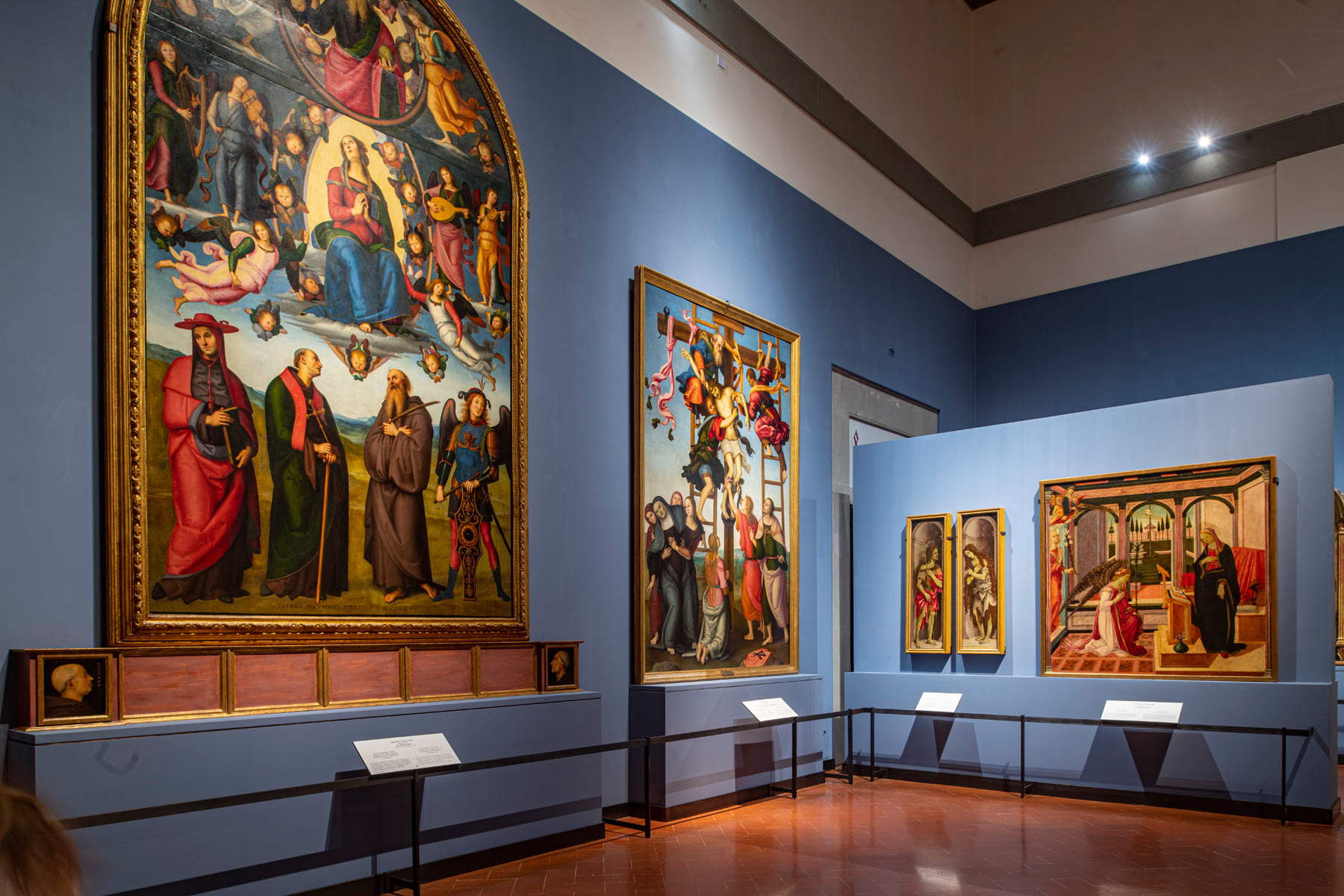
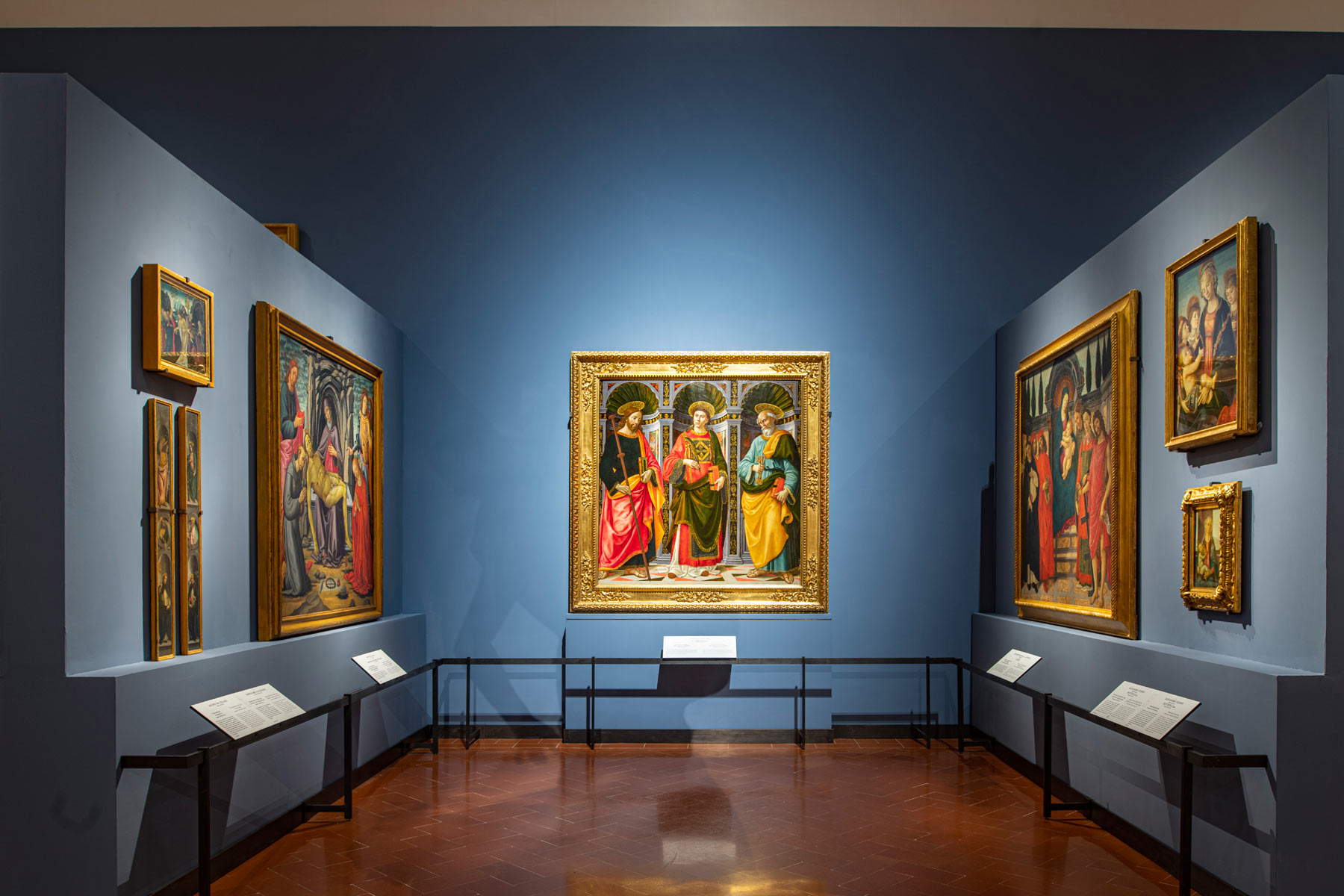

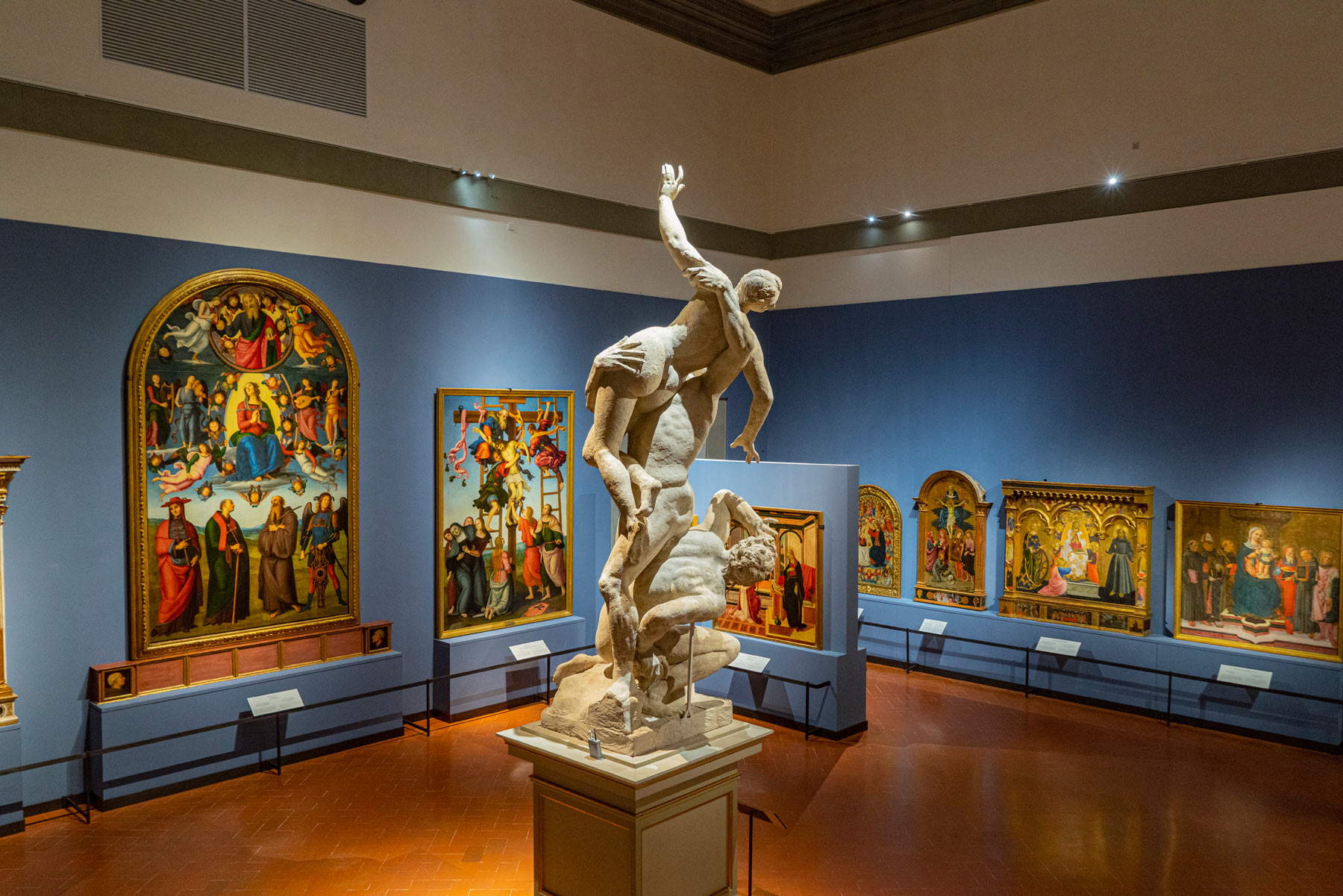
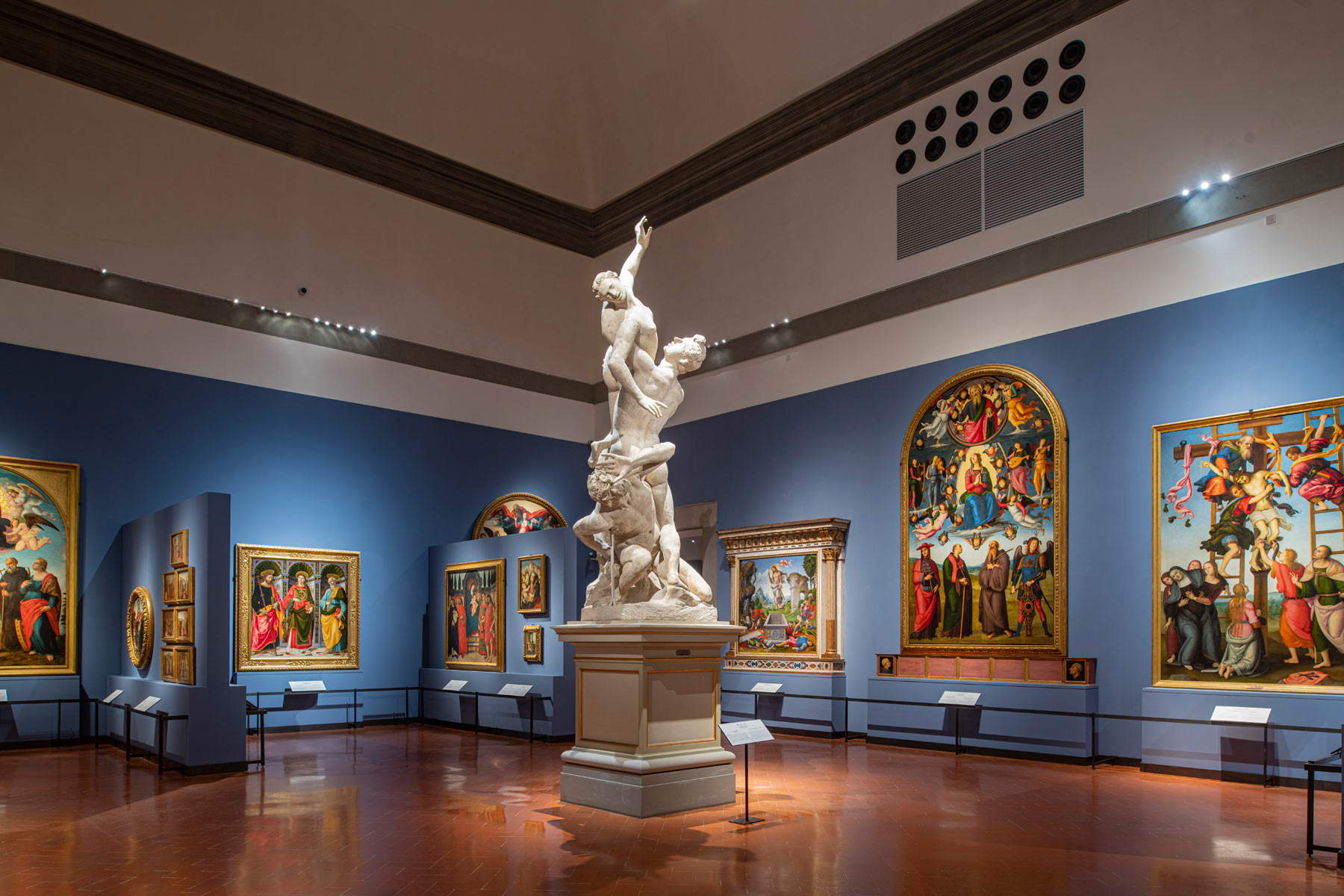

 |
| Florence, Colossus Room at the Accademia Gallery reopens completely renovated |
Warning: the translation into English of the original Italian article was created using automatic tools. We undertake to review all articles, but we do not guarantee the total absence of inaccuracies in the translation due to the program. You can find the original by clicking on the ITA button. If you find any mistake,please contact us.